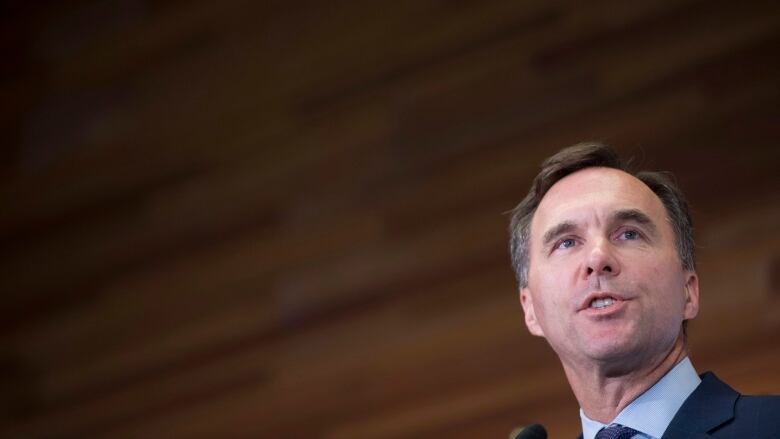Morneau unlikely to match Trump's tax moves in economic update
Source says matching U.S. tax changes would cost the government $30 billion over 5 years

Finance Minister Bill Morneau is unlikely to fully match the Trump administration's pricey changes to the way American businesses write off their capital costs when he delivers his fall economic statement next week, says a senior government source.
Canadian business leaders argue the American tax changes have created a competitiveness gap between U.S. and Canada. But those changes also have added tens of billions of dollars to the U.S. deficit something Canadian officials say they want to avoid.
Instead, any changes to Canada's capital cost allowance rules would be "balanced" and "fiscally responsible," said the source, speaking on background.
Ever since U.S. President Donald Trump slashed his country's corporate tax rate late last year and accelerated its capital investment write-offs for businesses, pressure has been mounting on Morneau to make similar moves to keep Canadian firms competitive.
While Canada's combined federal/provincial corporate tax rate is no longer lower than the U.S. rate, Morneau has maintained the federal portion of it is still competitive. He's also suggested that when Canada did have a much lower corporate rate, it did little to boost business investment.
No GSThike planned
But business groups also have pushed Morneau to match Washington's new rules on capital investment write-offs. Trump's new rules mean U.S. businesses are now able to claim 100 per cent of their capital investments right away for assets that have a useful life of less than 20 years.
In Canada, capital assets are divided into different classes, with different rates of write-offs. Machinery and equipment used in manufacturing and processing receive write-offs of between30 and 50 per cent over time periods that range from three years up to the lifetime of the asset, depending on the type of equipment and when it was purchased.
A consultant's report drafted for the Business Council of Canadasuggested matching the U.S. on its tax changes and paying for it by raising the GST. That's not an option the government is willing to consider,said the source.
"We're not going to take money from the executive assistant and give it to the CEO."
Matching the U.S. tax changes without raising revenue elsewhere would cost the government of Canada about $30 billion over five years, said thesource.
"We're not going to do that," said the source.
It's not clear whether that means Canada's new rules will offer a 100 per cent write-off over a longer period of time, or a write-off of less than100 per cent over a shorter period of time.
The Trudeau government's new measures could also target only certain kinds of capital assets. However, the source said the new rules will apply across all sectors of the economy, to avoid putting the government in the position of picking winners and losers.
"The priority is businesses that have a choice of investing north of the border or south of the border. We looked at what has changed for them (because of the U.S. tax changes) and looked at what we can do to address that," said the source.
Moving beyond the American market
The fiscal update also will include measures on trade as the Trudeau government looks to diversify Canada's foreign markets to reduce its dependenceon the United States, which remains Canada's biggest trading partner. The recent tumultuous NAFTArenegotiation talks, and the steel and aluminum tariffs imposed on Canada by Washington under a little-used 'national security' rule, have driven home for the federal government how important it is for Canada to spread out its export footprint.
The trade section in the fiscal update will also deal in part with fostering freer trade within Canada. Ottawa has been talking with provincial finance and trade ministersabout reducing interprovincial trade barriersover the past year.
The update also will touch on regulations and promoting competitiveness.
Morneau is expected to use the update to repeat the government's message that Canada's economy is strong, and that with the greater trade certainty offered by the negotiation of the new North American trade deal, USMCA, Canadians should feel confidentin the economy's ability to deliver jobs.
October's annual financial report stated that the economy grew by three per cent in 2017. The Bank of Canada reported that in the second quarter of 2018, growth surged to 2.9 per cent from 1.4 per cent in the first quarter. And at six per cent, the unemployment rate is close to a 40-year low.
Canada recorded a $19 billion deficit for 2017-2018, slightly lower than what was projected. In the last federal budget, the deficit wasforecast to fall to $15.1 billion next year before shrinking to $9.3 billion by the 2022-23 fiscal year.












_(720p).jpg)


 OFFICIAL HD MUSIC VIDEO.jpg)
.jpg)



























































































